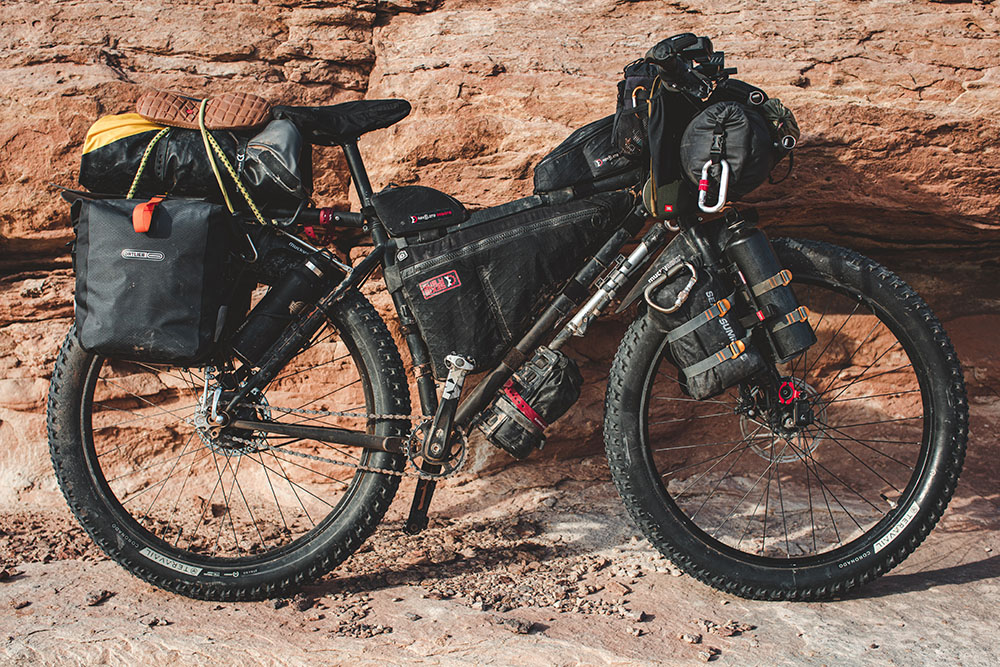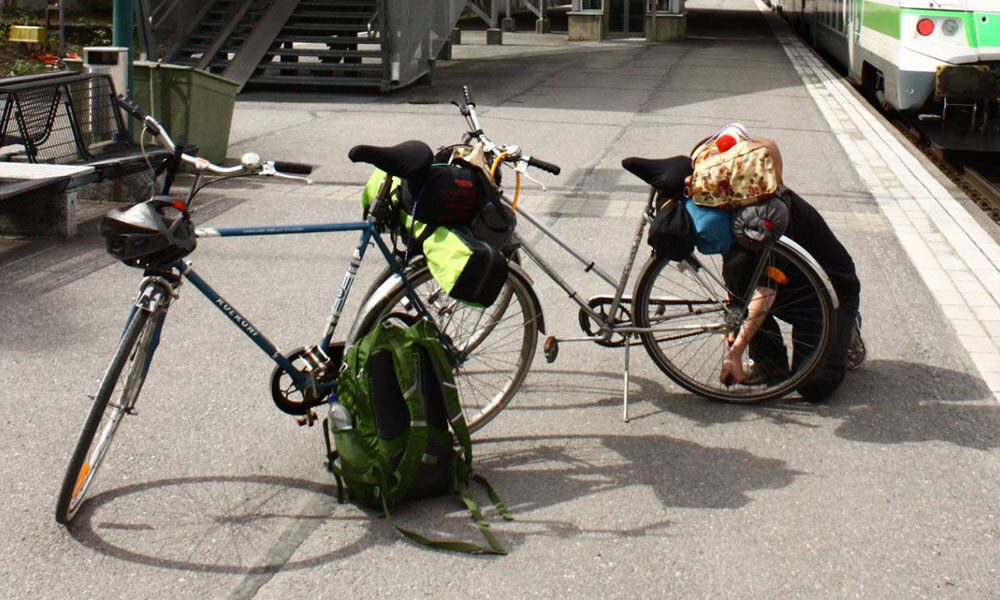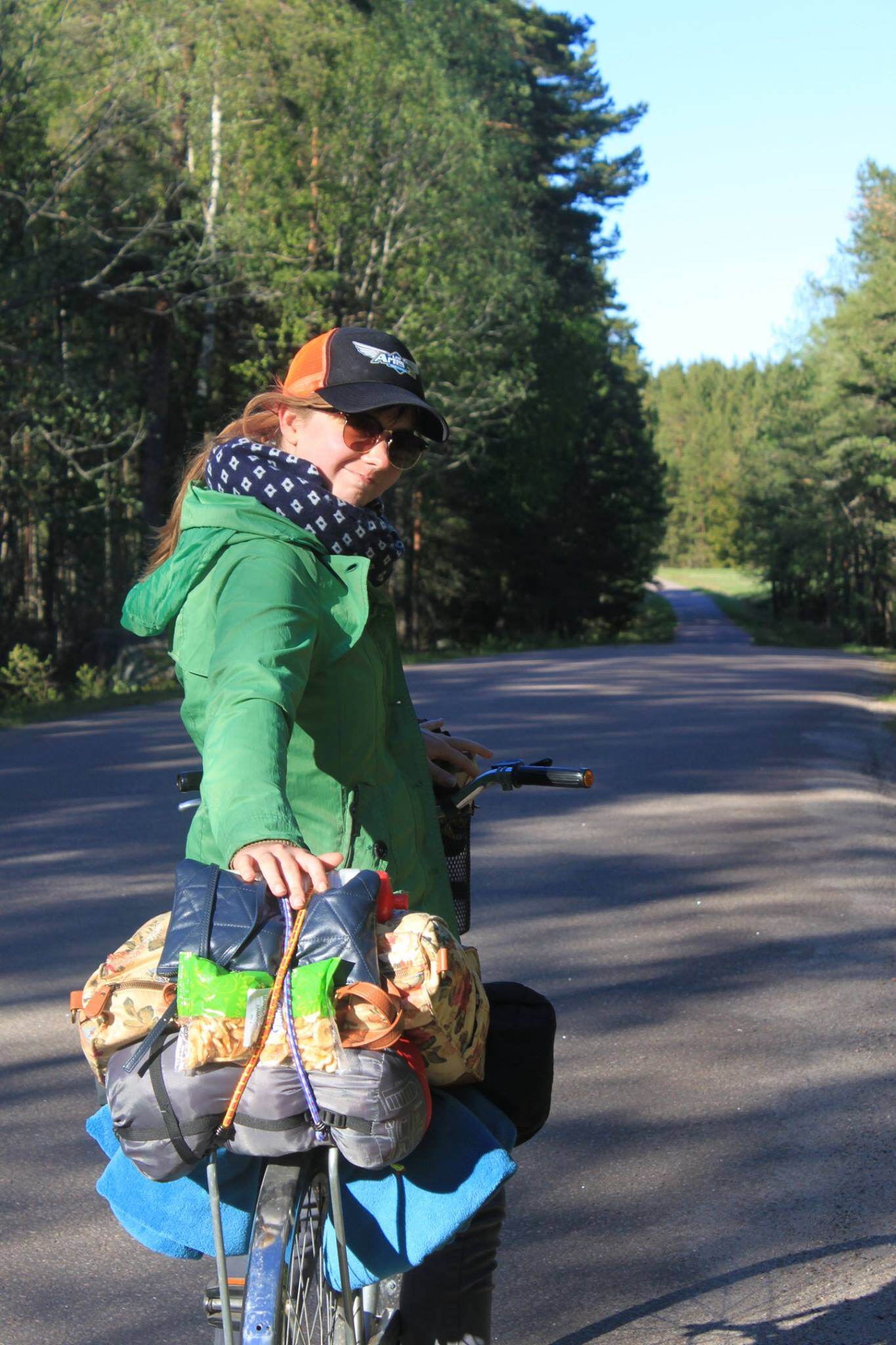Bikepacking is far from being a new trend, but in the current climate crisis context it has again gained in popularity amongst travellers. And let’s be honest, “classic” plane-based travel hasn’t been the easiest this past couple of years.
“Classic” plane-based travel hasn’t been the easiest this past couple of years.
Bikepacking: what does it mean?
The term “bikepacking” has been built from the words “bike” and “backpacking”, which is the idea of travelling the world with just a backpack. The backpacker is usually avoiding fancy hotels and very touristic sectors and prefers discovering the local culture at a slower pace.
On a bike, backpackers become mobile. They can skip planes, trains & public transport and just ride ahead. Most bikepackers travel during the summer time and transport a tent, which lets them stop wherever and whenever they feel like. It’s a sustainable option to spend a holiday off the beaten path, getting a bit of exercise on the way.
Gear up!
You should plan the needed toolkit to change a tire or adjust your brakes - this is not an item you want to be compromising on.
The most important thing when planning a bikepacking trip is how well-equipped you will be. You should always aim to balance the weight of your overall bike, including your gear & food, and what you’ll absolutely need to pack: for example, you should plan the needed toolkit to change a tire or adjust your brakes - this is not an item you want to be compromising on.
In general, pack foods that are calorie-rich and avoid glass bottles, which are unnecessarily heavy and can break.
Will you need to cook? Depending on where and how long your trip is, you might want to eat something else than nut bars and bananas. Consider buying or borrowing light kitchen utensils, limiting them to what you will for sure use, and vice-versa: adapt your meal plans to what’s already available. In general, pack foods that are calorie-rich and avoid glass bottles, which are unnecessarily heavy and can break.
What bike to use is of course also key in your planning, if not the most crucial decision to make. A basic recommendation there would be to choose a gravel bike: they are suitable both for roads and paths, which will of course come in handy in unknown areas to prevent limiting your options.

If you already know where you’ll ride exactly, other types of bikes might be even better choices: why not choose a full-suspension mountain bike if you’re mostly expecting rough terrain, or a simple road bike to travel long distances.
You’ll want to avoid having to carry stuff yourself as much as possible and let your bike do the job.
Once you have selected the right bike to buy, lease, rent or borrow (so many choices) for your trip, ask your preferred store what recommendations they can make regarding bike bags & easy packing. This time unlike standard backpackers, you’ll want to avoid having to carry stuff yourself as much as possible and let your bike do the job.
Discovering the world at your own pace
Although having the perfect bikepacking bike and gear definitely improves the experience, it is not a must.
Here I have to add that, although having the perfect bikepacking bike and gear definitely improves the experience, it is not a must.
A few years ago, shortly after I finished my studies and moved to Finland, I only had a very cheap bike I bought second-hand (for a whole lot of money back then: 50€ I didn’t have). It was not suited for much, let alone bikepacking, but it had a back carrier. I personally also wasn’t suited for bikepacking… I had stopped doing sports for a few years, had trouble breathing and little interest in changing those habits.

And yet we went. We carried a bunch of spare tubes, a tent (again, cheap: huge and heavy), some food and, if I remember right, maybe even a couple of beers. And so we went. We took the train to Turku, a couple of hours from Helsinki, and rode 220km over the course of 4 days around the archipelago, stopping once in a field, once at an actual camping place, and finally catching a break in the town of Naantali.

Sure it would have been easier and less hazardous on a fancy bike and with basic training, but then again; it wouldn’t have been the same feeling. There’s something about making unrecommended choices that just makes for better stories.
Where should I go?
Now that we’ve covered the fact that literally anyone can start bikepacking on almost any bike: where will you try it out this summer?
Depending on the reasons you’re choosing bikepacking for, it may make a lot of sense to use this opportunity to discover the world waiting for you right on your doorstep: without a need to travel anywhere to start your adventure, this is the most sustainable option you can think of for a different kind of holiday. In Nordic countries like Finland, camping is authorised almost anywhere, making it really easy to just wander where the path takes you.
Some other common bikepacking trips in Finland include the Turku archipelago tour I described above, travelling to the Åland Islands (a much longer version of the same trip) or circling around Lake Saimaa, the biggest in the country. Many itineraries can also be found from the Lapland area, but I’d wager that those require a little bit better gear and preparation. There might still be some snow lying around in June…

Many tours are also available in the rest of Europe. One of the most famous ones is the so-called Atlantic Coast Route connecting Norway to Portugal (well, with a few sea-breaks on the way) but you can find all official Eurovelo routes on their website. Depending on your country of residence you’ll also find local resources I’m sure you don’t need our help for. I discovered last summer for example that one of those comes really near my hometown, the “Véloroute du Nord”, and I can’t wait to try it out.
And remember: you don’t need to cross Europe by bike just yet. Spending the night in the forest near your home might be just as nice and unique.
So find the bike you need, use the expert advice of our partners, and ride safe!

